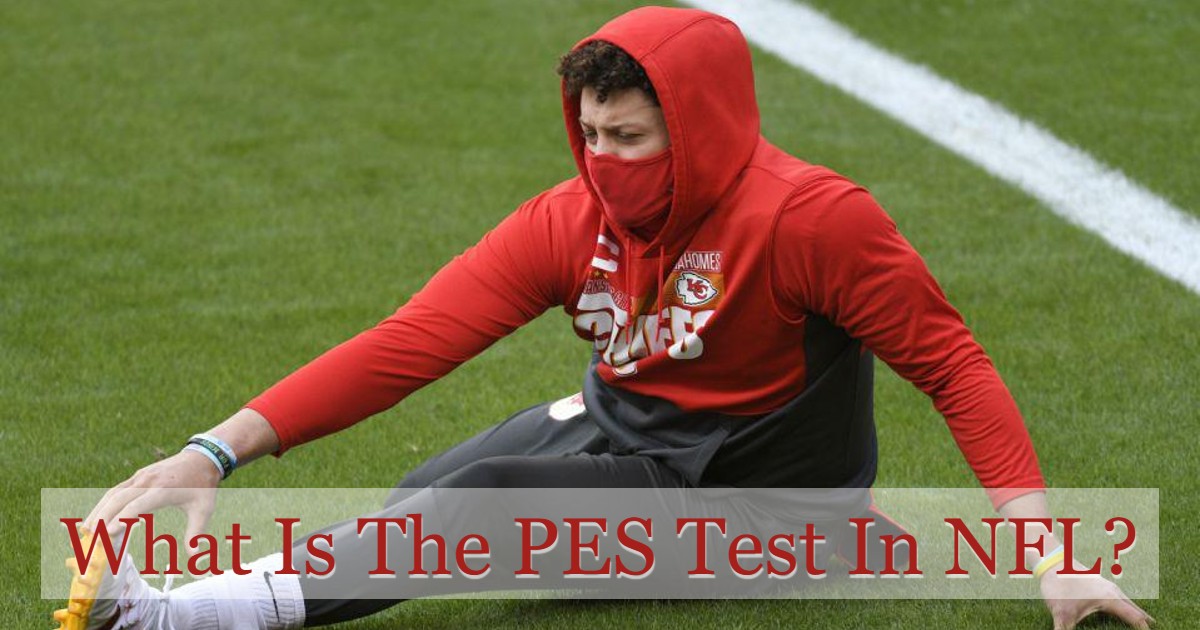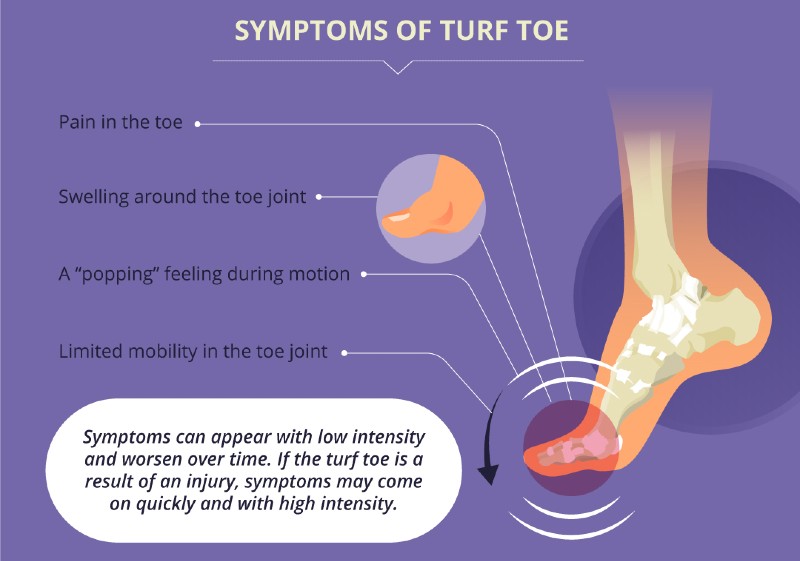Although it sounds like a relatively insignificant injury, it can be painful and last for a long time. A lot of athletes, especially those who work in the NFL, are diagnosed with turf toe, and this condition often leaves them unable to go out on the field for various reasons. In some cases, these injuries can keep NFL players out for weeks at a time. Exactly what is turf toe in NFL?
Turf toe is a sprain in your big toe joint that occurs when the middle part of your big toe ligament (which connects your foot to your middle toe) gets stretched abnormally while working to push up against the ground. The condition is common among athletes who wear cleats and practice on artificial surfaces.
Turf toe is a common football injury that may occur when a player’s big toe is repeatedly and forcefully bent in the direction of the other toes. The mechanism of injury involves the flexor tendon becoming inflamed after continuous irritation.

What is a Turf Toe Injury in Football?
Content Summery
Turf toe is an injury to the ends of the metatarsal bones at each of the three joints that join them to the phalanges (toe bones). The term turf toe (also known as plantar fasciitis, Metatarsalgia, and MTP joint sprain) describes an injury to the Plantar Fasciitis.
This is an injury that can occur during contact sports, especially if you fail to wear proper protective gear such as pads and helmets. It usually happens when the player plants his foot and his toes bend backward (in what’s known as dorsiflexion).
Over time, this can cause damage to the ligaments in your big toe joint.
Symptoms of Turf Toe
Turf toe symptoms usually occur after playing on an artificial surface or wearing cleats on hard surfaces.
The symptoms of turf toe include:
The main symptom of turf toe is pain in the affected joint when it is bent or twisted. The pain usually subsides once you stop moving it but will return if you move it again. It can be difficult to walk on your toes or wear shoes with tight-fitting toes. Tenderness at the joint between your big toe and its neighboring toe or under your second toe (the one next to your big toe).
When sitting for long periods of time or at night, the pain may become worse. When you bend or twist your foot, you may experience numbness or tingling. This can extend up to your knee, thigh, or hip.
Turf toe is common in American football players because they use their feet to plant and push off during games. It is also common in dancers who perform repetitive movements with their feet.
Causes of Turf Toe
Turf toe is caused by jamming or hyperextending your big toe joint. During a run, you can push off with your toes too forcefully or land on your toes after jumping.
The name “turf toe” comes from football players who were injured while playing on artificial turf fields. However, turf toe can occur in any sport where athletes land hard on their toes or push off forcefully with them (in many popular sports, such as football, soccer, volleyball, or basketball).
This can also happen when someone falls and lands on their feet. The joint capsule that surrounds your big toe is very strong, but when you jam it into the ground too hard, it can tear. This causes swelling, pain, and sometimes bruising around your big toe joint.
How to Treat Turf Toe?
In order to treat turf toe, you must decide how severe your symptoms are and how long they have been present.
If When you are suffering from mild symptoms of turf toe, you might be able to treat the condition at home by resting, applying ice, and taking over-the-counter pain medications.
If you do not notice any improvements in your symptoms after a few days, consult your physician for a further evaluation and possibly imaging tests (such as X-rays).
If you have more severe symptoms or if the diagnosis isn’t clear, your doctor may recommend a cortisone injection into your painful area. They may also recommend physical therapy exercises that strengthen the muscles around your foot joints to help prevent the recurrence of turf toe injuries.
Your doctor might give you a prescription-strength nonsteroidal anti-inflammatory drug (NSAID) like ibuprofen to reduce inflammation and relieve pain.
How to Prevent Turf Toe?
Turf Toe Prevention Tips:
Turf toe can be prevented by following these tips:
- Wear shoes with good arch support and thick soles
- Avoid wearing shoes with narrow-toe boxes or high heels
- If you’re going to be doing any exercise, make sure that your shoe laces are tied tightly enough to prevent them from coming untied.
- Wear thick socks and don’t wear shoes that are too tight.
- If you run, make sure your foot does not overpronate or roll inwards.
- If you’re an athlete, ask your doctor about using orthotics to reduce the risk of turf toe.
How Long Does Turf Toe Take to Heal?
Turf toe is also called soft tissue injury of the first MTP joint (MTP stands for metatarsophalangeal).
Turf toe injuries typically take about six weeks to heal completely, but this time frame can vary depending on how severe your injury is and how well you follow your doctor’s instructions for treatment.
The severity depends on how much damage was done to your ligaments and cartilage. There is a correlation between the severity of the damage and the length of time it takes to heal.
A full recovery could take longer than six weeks if there are multiple fractures in your big toe joint or if you had had surgery on your foot before this injury occurred.
Final Words
A turf toe is often experienced by athletes who play sports that place a great deal of pressure on their toes as a result of repetitive movement.
Athletes can be vulnerable to turf toe because they usually use their toes and feet to gain more control and speed in their movements. Athletes are especially vulnerable to this injury if they play football, soccer or are runners.

FAQs
Q. What do NFL players do for turf toe?
The best way to treat turf toe is to rest, ice, and elevate your foot. The pain will go away with time, but you may need surgery if it is severe enough.
Q. Can NFL players play with turf toe?
If you have mild turf toe, it is possible that you can play through the condition. If your symptoms are severe, however, it may be better to sit out a few games while you allow your injury to heal.
Q. What causes turf toe in football?
Turf toe occurs when your big toe gets bent backward when you plant your foot on the ground during running or cutting movements.
Q. What happens if you play on turf toe?
If you play on turf toe, it will only get worse. The condition can also lead to other injuries in your foot and ankle if you continue playing with it.
